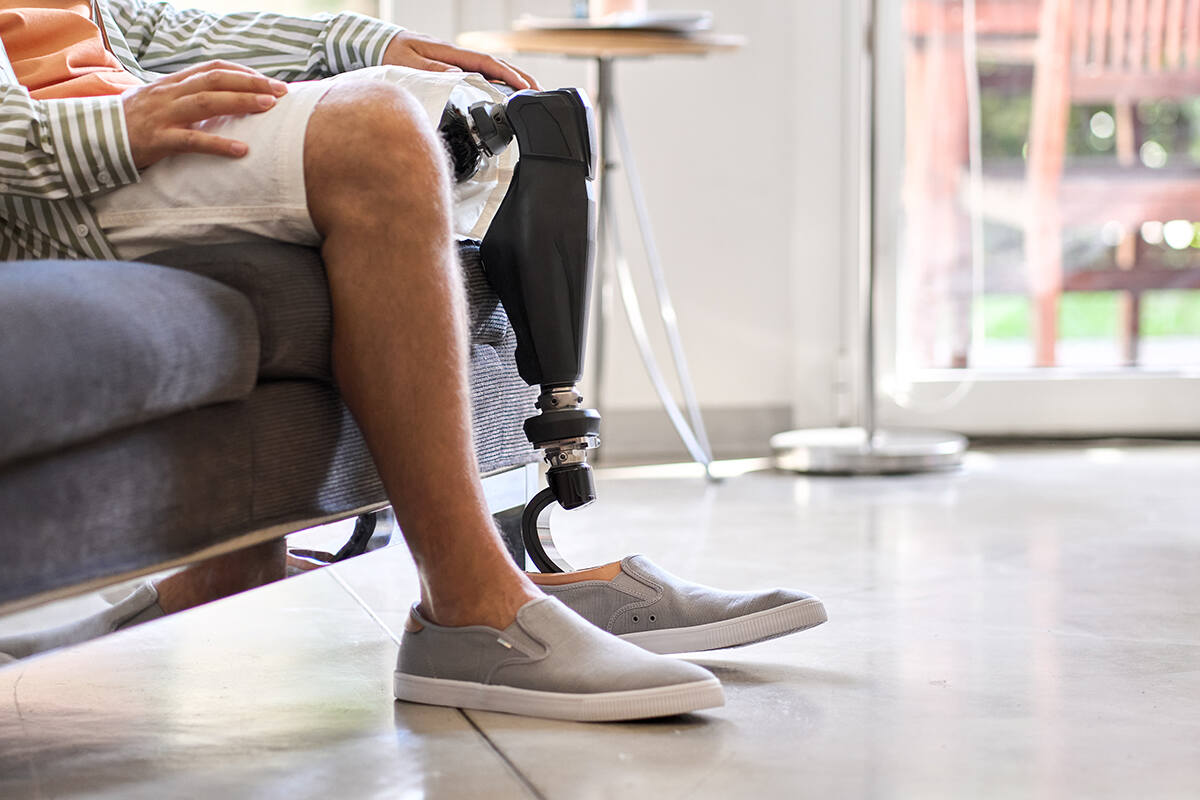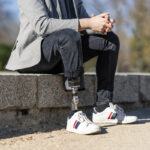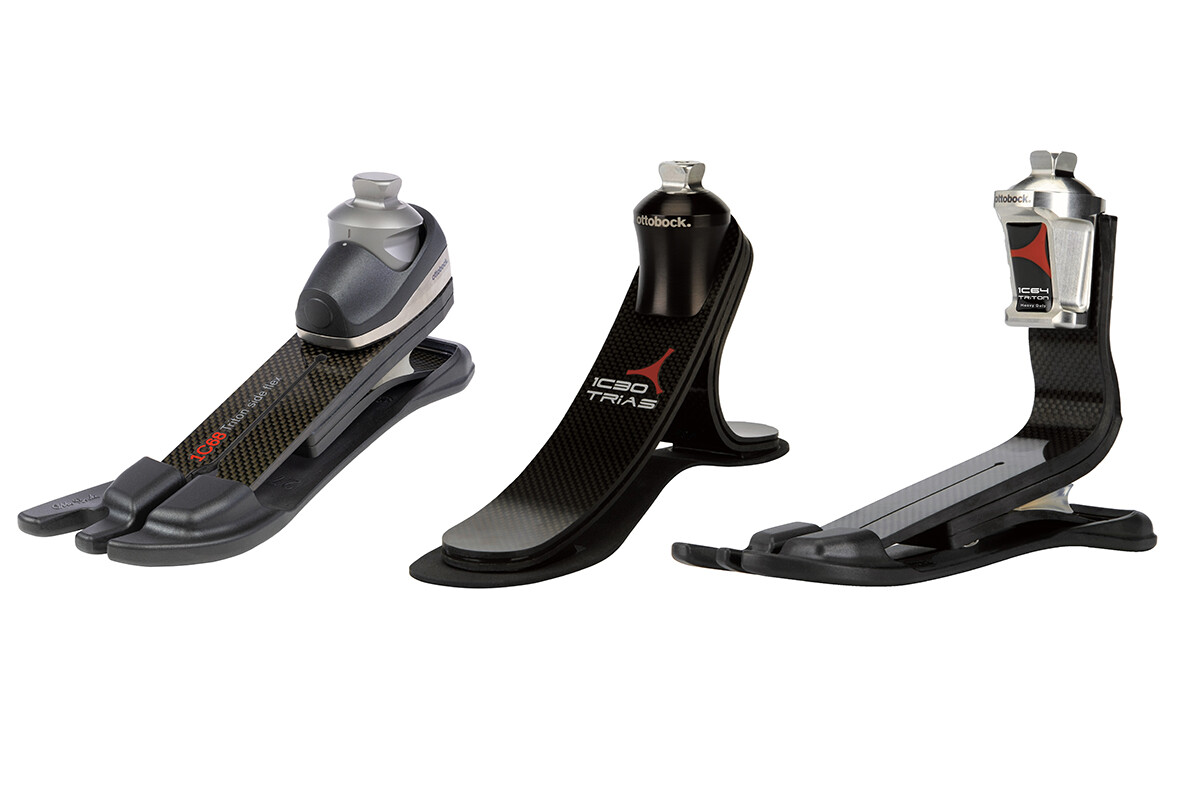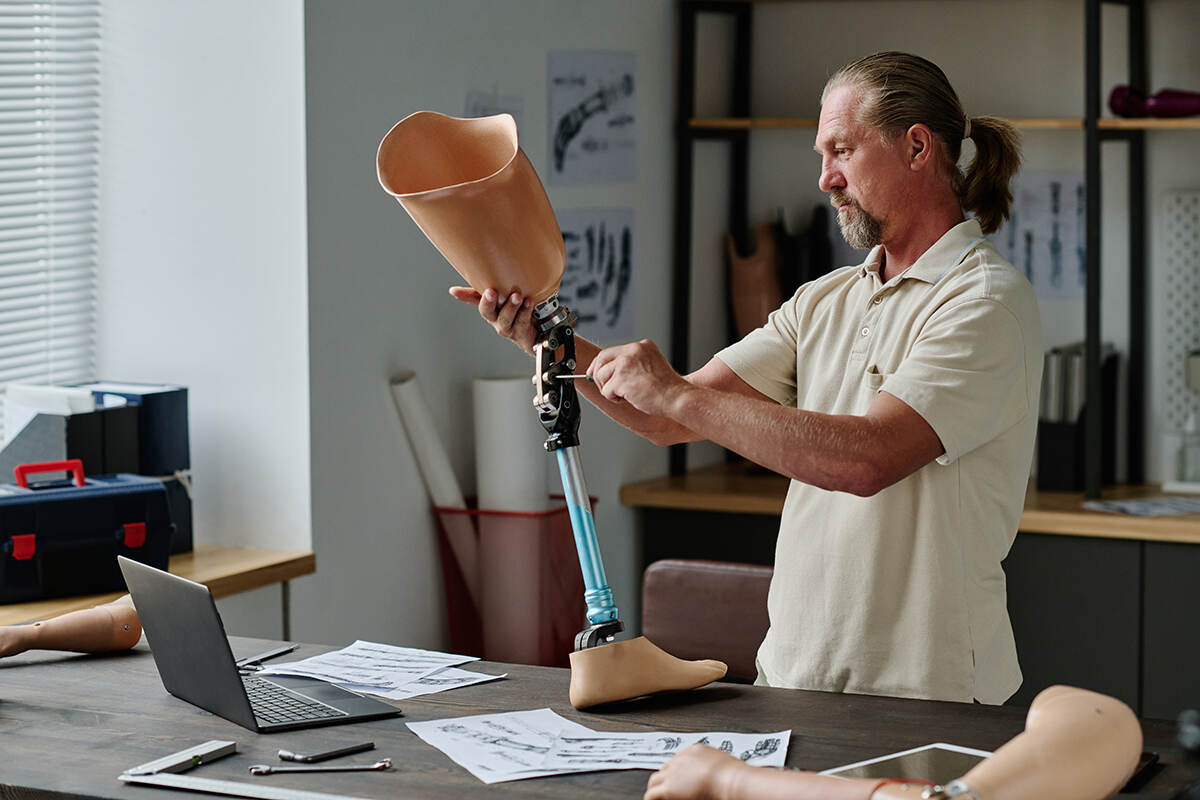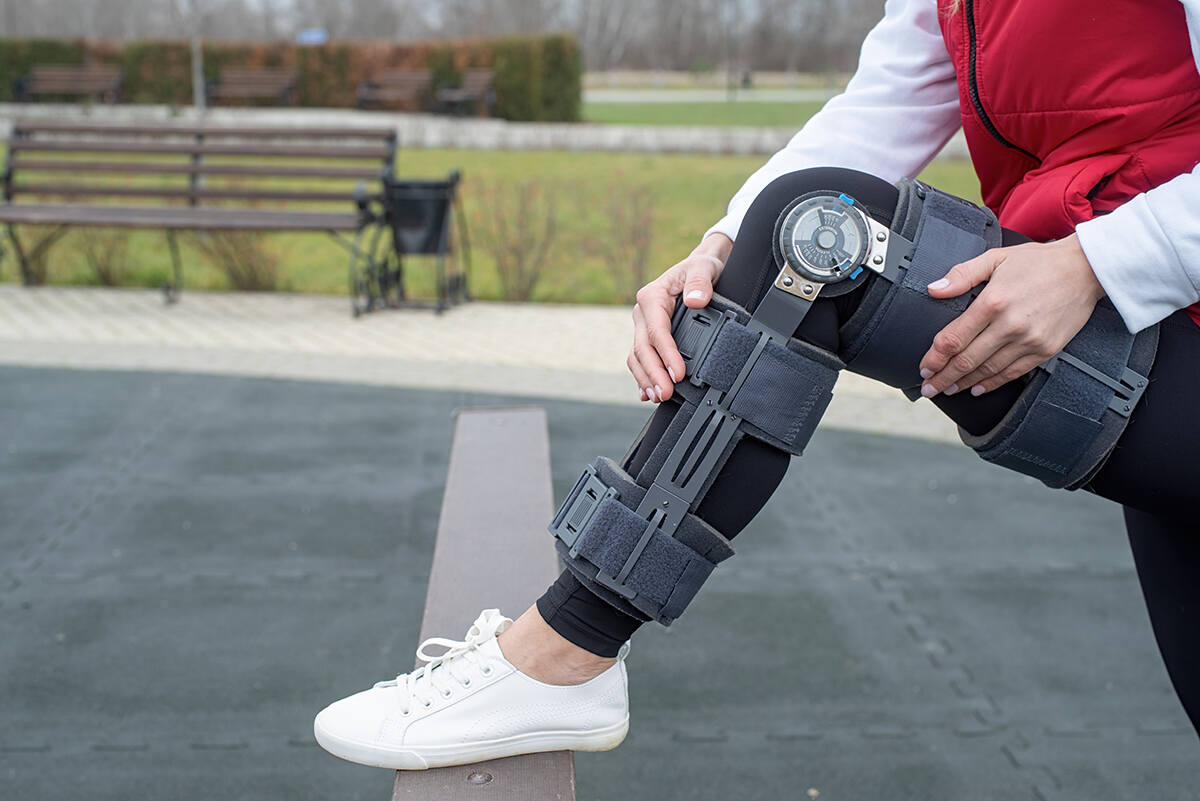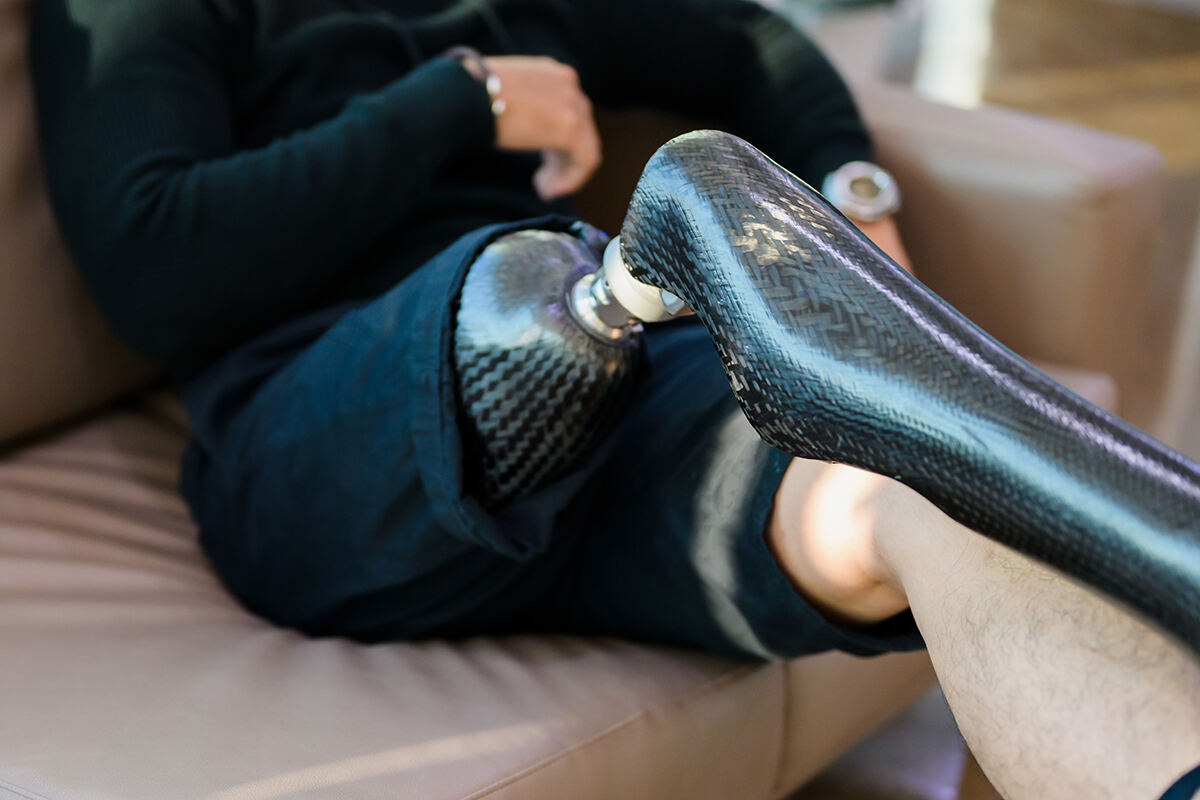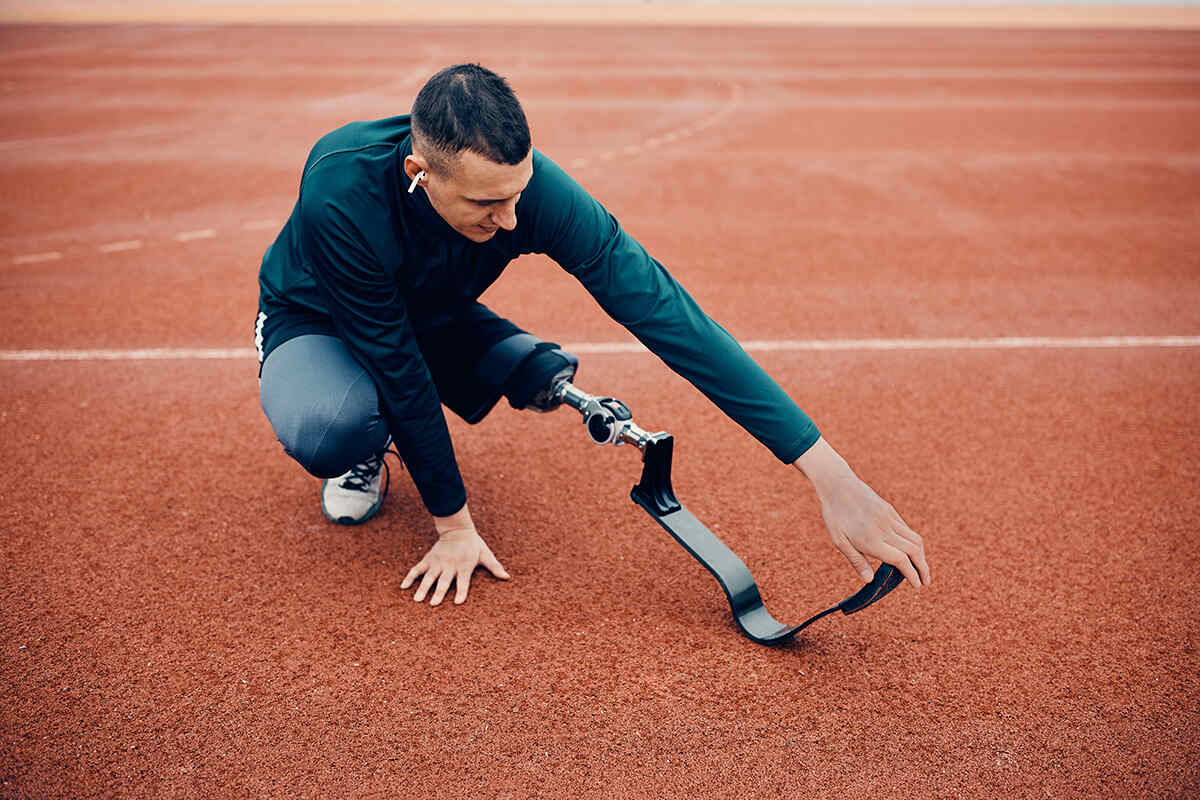Imagine a world where advanced technology can restore the ability to walk for amputees, allowing them to regain their independence and mobility. Welcome to the cutting-edge field of bionic leg prosthetics, which has evolved from simple wooden pegs to highly sophisticated, AI-driven devices. Join us as we explore the fascinating journey of these prosthetics and their impact on the lives of countless individuals.
Key Takeaways
- Bionic leg prosthetics have evolved to provide amputees with improved mobility and independence.
- Advanced Artificial Intelligence (AI) has greatly enhanced the range, fluidity and functionality of bionic legs.
- Collaborative efforts between scientists, surgeons, research institutions and other stakeholders are essential for development in this field.
Exploring the Evolution of Bionic Leg Prosthetics

The development of prosthetic limbs has seen remarkable progress, moving from primitive hooks and wooden pegs of the Middle Ages to the present-day advanced bionic leg prosthetics, which aim to return mobility and independence to lower limb amputees. Technological advancements, including:
- microcontrollers
- motors
- transmission systems
- batteries
- AI
have significantly influenced the progression of bionic leg prosthetics, enhancing the functionality of these devices for amputees of both lower and upper limbs.
From Wooden Pegs to Titanium Power
The early days of prosthetic limbs saw the use of basic wooden pegs, which were uncomfortable and provided limited functionality. Over time, advancements in materials and designs led to the introduction of lightweight titanium structures, offering improved mobility and efficiency in prosthetic limbs.
Upper limbs, responsible for controlling 40 muscles and engaging a significant area of the brain cortex, have always presented unique challenges in prosthetic development for upper limb amputees. However, the transition from wooden materials to more advanced materials has allowed for the creation of more effective prosthetics, significantly enhancing the mobility and efficiency of both upper and lower limb prosthetics.
The Leap into Electronics
Electronic prostheses first emerged near the end of World War II, marking a significant milestone in the history of prosthetic legs. The incorporation of electronics in prosthetics has revolutionized the field, providing increased mobility and functionality for individuals with limb loss through powered devices that can be operated based on the movement of the amputee’s residual limb.
Microprocessors, serving as the internal computer that makes decisions based on sensory input, have become indispensable for electronic prosthetic legs, resulting in superior performance and control in comparison to traditional prosthetic legs. Additionally, some electronic upper-limb prosthetics provide sensory feedback through various mechanisms, such as pressure or touch sensors, allowing users to experience a sense of touch and feel objects through the prosthetic limb.
Advanced Artificial Intelligence in Prosthetics
One of the most notable advancements in the field of bionic leg prosthetics is the integration of advanced artificial intelligence (AI). For instance, the Utah Bionic Leg utilizes AI to provide amputees with additional power while executing activities like:
- walking
- standing
- sitting
- climbing or descending stairs and ramps
This additional power facilitates these activities and reduces the strain on amputees, who typically rely heavily on their upper body and their intact leg to compensate for the lack of assistance from their prosthetics.
AI algorithms utilized in bionic leg prosthetics include:
- Gait monitoring and adaptation algorithms
- Computer vision algorithms
- Machine learning algorithms
- Nerve signal interpretation algorithms
- Data analysis and collaboration algorithms
These advancements in AI technology have significantly improved the range, fluidity, and functionality of movements available to amputees.
The Mechanics of Modern Bionic Legs
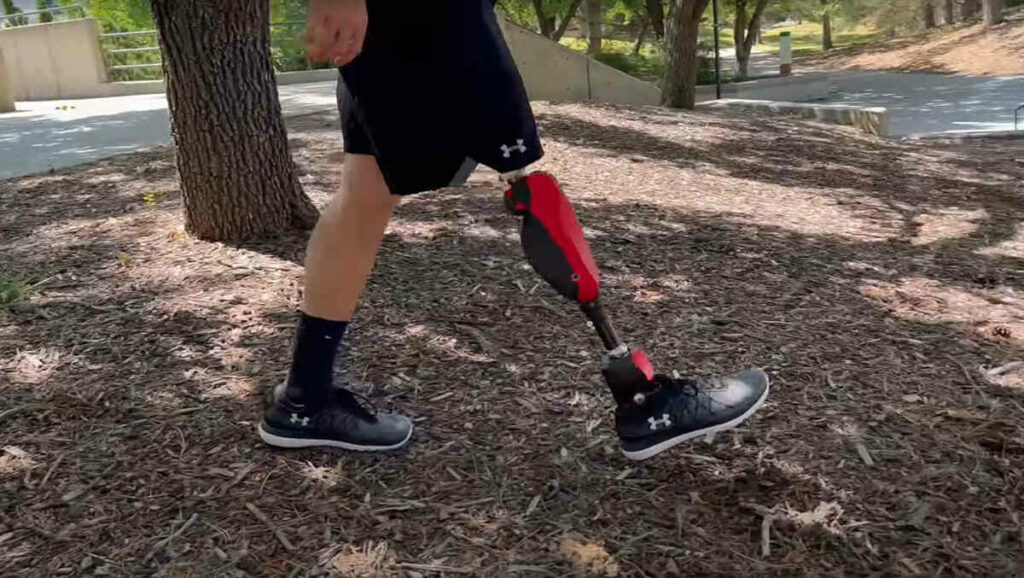
Modern bionic legs employ sophisticated mechanics to offer users smooth control and movement. These prosthetics incorporate powered ankle joints, motor control, and sensors to facilitate natural movement and responsiveness, allowing amputees to regain their mobility and independence.
For example, the Utah Bionic Leg is outfitted with custom-designed force and torque sensors, accelerometers, and gyroscopes that determine the leg’s spatial position, connected to a computer processor that interprets the sensor inputs to govern the prosthetic joints. This real-time data assists in providing power to the motors in the joints, enabling activities such as walking, standing, walking up and down stairs, and navigating around obstacles.
Ankle Joints and Motor Control
Improved designs of ankle joints play a key role in augmenting mobility and stability in bionic legs. Bionic ankle joints replicate the mechanics of a biological ankle by utilizing custom-designed force and torque sensors, accelerometers, and gyroscopes to measure the position and motion of the leg.
Bionic ankle joints offer the following benefits:
- Active adaptation to different walking velocities
- Ligament support
- Generation of mechanical power during the push-off phase of gait
- Variable stiffness properties
- Adaptation to various road surfaces
- Overall stability and balance during walking
The Role of Sensors in Movement
Sensors contribute greatly to the functionality of bionic legs, enabling natural movement and responsiveness. Some types of sensors used in bionic legs include:
- Prosthetic sensors, which detect pressure, force, and position
- Myoelectric sensors, which utilize implanted technology to detect muscle signals
- Fiber-optic communication sensors, which are being explored for more sophisticated functionality
- Magnetic sensors, which are also being researched for their potential use in bionic legs.
These sensors play a crucial role in allowing bionic legs to mimic natural movement and provide a seamless user experience.
Sensors integrated into bionic legs are implanted directly into the limb muscles of the patient, detecting sensory information such as:
- touch
- pressure
- vibration
- muscle stretch
This enables the bionic leg to respond and adjust to the user’s movements, providing improved control, balance, and overall performance of the prosthetic limb.
Surgical Techniques and Integration with the Human Body
The effective integration of bionic legs with the human body largely depends on the surgical techniques employed to implant the prosthetic device. Bionic limbs can be categorized into three primary groups, based on the type of tissue interfaced: nerve-transferred muscle interfacing, direct muscle interfacing, and direct nerve interfacing. The surgical approach for implanting electrodes for bionic leg prosthetics is direct, targeting nerves such as the median and ulnar nerves of the upper limb and the sciatic (tibial) nerve for the lower limb.
Correct interfacing of residual nerves is necessary for accomplishing successful bionic leg integration. Surgical procedures such as osseointegration surgery and electrode implantation surgery are commonly employed to implant the prosthetic device, with efforts being made to minimize the risk of infections and other complications.
Implanting Success
Accurate implantation and electrode placement play a critical role in the success of bionic leg integration. The surgical procedure for electrode implantation necessitates targeting the proximal nerve area and skillfully placing and securing the electrodes. Proper electrode placement is critical for stimulating afferent axons and replicating sensations in the amputee’s nervous system.
The most commonly employed surgical procedures for bionic leg implantation are osseointegration surgery and electrode implantation surgery, which focus on creating a secure and stable connection between the residual limb and the prosthetic device. These surgical procedures aim to establish a seamless integration between the bionic leg and the user’s nervous system, allowing for optimal control and sensation restoration.
Nervous System Synchronization
The synchronization of bionic legs with the user’s nervous system is a vital aspect of providing seamless control and sensory feedback. Creating a bidirectional connection between the user’s nervous system and the prosthetic limb allows for the transmission of sensory signals from the prosthetic to the nervous system. Techniques such as sensorized insoles and knee encoders are used to read and encode the signals, bridging the peripheral nervous system to the prosthetic limb and enabling the user to perceive the prosthesis as part of their body.
Nervous system synchronization is critical in optimizing the performance of bionic legs, as it facilitates a more fluid and coordinated movement between the prosthetic limb and the user. By connecting the nervous system of the patient to the prosthetic, it allows the bionic leg to respond to the user’s intentions and movements in real-time, resulting in improved control, balance, and overall performance of the prosthetic limb.
The User Experience: Adapting to Life with a Bionic Leg
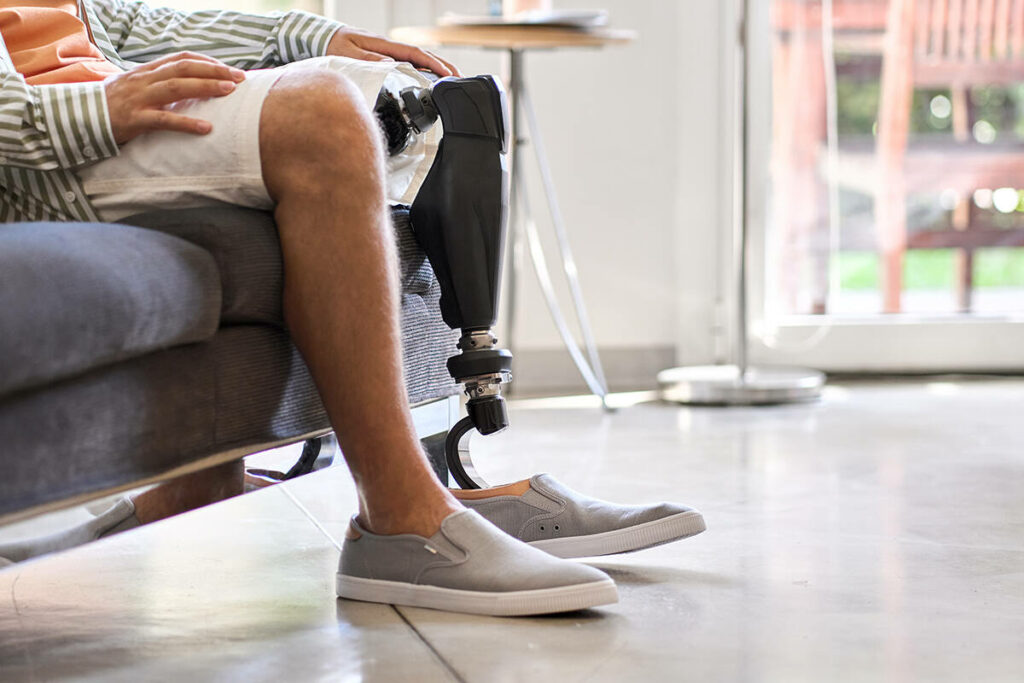
Living with a bionic leg prosthetic can pose various challenges, including physical adjustments, the fit and comfort of the prosthetic, psychological and emotional impacts, a learning curve, and continual maintenance and repair. However, the benefits of using bionic legs far outweigh the challenges, as they can improve sensation, facilitate reintegration of the artificial limb, promote independence, and enable users to confidently take on more tasks and engage in activities of daily living without restrictions.
Everyday Activities Reimagined
Individuals with lower limb amputation often face challenges such as balance issues, difficulty with tasks that require stability, and the risk of slipping or falling. Bionic leg prosthetics offer amputees enhanced mobility and balance control, allowing them to engage in a wide range of activities with greater ease and confidence.
By providing controlled movement based on the amputee’s residual limb, imitating key biomechanical functions, and connecting directly to the bone for a more natural feel, bionic legs can transform everyday activities for amputees. From walking and climbing stairs to participating in recreational activities, advanced bionic leg prosthetics can significantly improve the mobility, independence, and quality of life for amputees.
The Impact on Quality of Life
The use of advanced bionic leg prosthetics can considerably influence the quality of life for amputees. Studies have shown that prostheses usage is linked to higher levels of employment, improved quality of life, and fewer secondary health issues. Furthermore, prosthetic limbs can be beneficial in alleviating symptoms and increasing the overall well-being of people with lower limb amputations.
In addition to the physical benefits of using bionic legs, there are also psychological advantages. The improved sensation, enhanced reintegration and embodiment of the artificial limb, and better quality of life provided by bionic legs can have a positive effect on the mental and emotional well-being of amputees. With the advancements in bionic leg prosthetics, users can regain their independence and enjoy a more fulfilling life.
Innovations from Leading Research Labs
Prominent research labs like Utah’s Bionic Engineering Lab and the University of Michigan have led the way in innovations in the area of bionic leg prosthetics. These advancements include:
- The Utah Bionic Leg
- Progress in creating prosthetic limbs that resemble biological ones
- Developments in materials and design
- Bionics and myoelectric technology
- The utilization of 3D printing
Utah Bionic Leg: A Case Study
The Utah Bionic Leg, developed by Tommaso Lenzi and his team, is one of the most advanced bionic leg in the field of bionic leg prosthetics. This motorized prosthetic for lower-limb amputees features powered knee and ankle joints with advanced AI, enabling wearers to walk with increased strength and mobility. Lauded as one of the top inventions of 2023 by TIME Magazine, the Utah Bionic Leg showcases the potential for advanced prosthetics to revolutionize mobility for amputees.
Equipped with custom-designed force and torque sensors, accelerometers, and gyroscopes, the Utah Bionic Leg determines the leg’s position in space and interprets sensor inputs to control the prosthetic joints. Its “smart transmission system” connects the electrical motors to the robotic joints and automatically adjusts the joint behaviors for each activity, similar to shifting gears on a bike. This innovative design allows for a more natural and fluid walking experience for amputees.
Collaborative Efforts for Better Prosthetics
Collaborative efforts play a significant role in the development of better prosthetic solutions. Interdisciplinary teams of scientists and surgeons work together to develop smart prosthetics for amputee patients, while collaborations between research institutions and government organizations strengthen orthotic and prosthetic care in developing countries. These efforts aim to enhance the quality of life and mobility for individuals with limb differences.
Partnerships between academia and stakeholders are also crucial for the development of solutions that address people’s needs. Researchers, engineers, and medical professionals come together to share expertise and resources, driving innovation in the field of bionic leg prosthetics and improving the lives of countless individuals.
The Future of Bionic Leg Prosthetics
As technology continues to progress, the potential for bionic leg prosthetics also grows. The future of bionic limbs looks promising. It could potentially become a fully implantable, bidirectional device for the upper and lower limbs, which is controlled by implanted electrodes to detect muscle or nerve signals. Sensory feedback can be achieved by stimulating nerves.
However, there are still limitations and challenges to overcome in the development of such advanced prosthetics. Most studies are short-term, and further research is necessary to understand the behavior of electrodes in muscles and nerves over time, as well as the development and evaluation of fully implantable solutions.
Despite these challenges, the future of bionic leg prosthetics, including prosthetic leg technology, is promising, with the capability to transform the lives of amputees and reshape mobility for those in need.
Frequently Asked Questions
How much does a bionic prosthetic leg cost?
A basic prosthetic leg can cost as low as $10,000, while a more advanced computerized one can exceed $100,000.
How long do bionic legs last?
On average, a prosthetic leg lasts three to five years depending on the care and maintenance taken. Adjustments or replacements may be necessary over time, so it is important to work with your prosthetist to ensure the best results.
What are the negatives of bionic limbs?
Bionic limbs can cause a range of negative effects, such as implant instability, bone fracture, breakage of the implant parts and infection, all of which can lead to pain.
How has the field of bionic leg prosthetics evolved over time?
The field of bionic leg prosthetics has advanced significantly, from early wooden pegs to modern AI-driven devices featuring advancements in materials, design, electronics and artificial intelligence.


